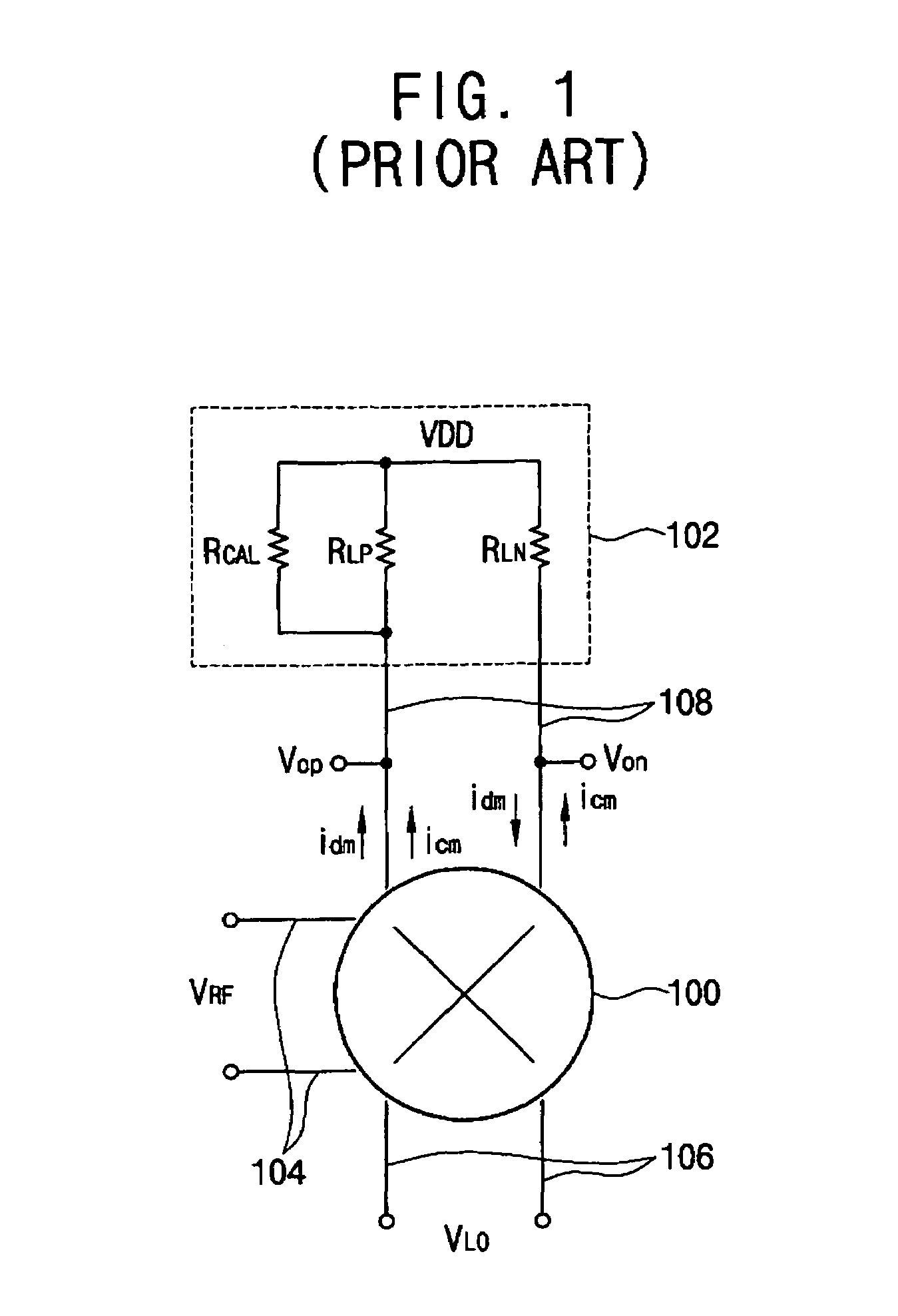Circuit for reducing second order intermodulation
a second-order intermodulation and circuit technology, applied in the field of radio frequency communication systems, can solve the problems of interference with modulation and demodulation, inability to easily filter out, and unsatisfactory output frequencies that are different from input frequencies, and achieve the effect of improving the linearity of the radio frequency (rf) devi
- Summary
- Abstract
- Description
- Claims
- Application Information
AI Technical Summary
Benefits of technology
Problems solved by technology
Method used
Image
Examples
Embodiment Construction
[0028]FIG. 2 is a block diagram illustrating a direct conversion receiver circuit including a second order intercept point (IP2) calibration circuit according to an exemplary embodiment of the present invention. The IP2 calibration circuit calibrates the second order intercept point (IP2) to control the second order intermodulation (IM2).
[0029]Referring to FIG. 2, the IP2 calibration circuit of the present invention includes a load impedance 208 and a common mode feedback circuit 210. In the direct conversion receiver circuit, the load impedance 208 and the common mode feedback circuit 210 are operatively connected to the output terminals 206 of a mixer 200.
[0030]The mixer 200 directly converts a carrier signal VRF to a baseband is signal. Accordingly, the mixer 200 has a first pair of input terminals 202 for receiving the carrier signal VRF and a second pair of input terminals 204 for receiving a local oscillation signal VLO. The mixer 200 is employed in a direct conversion and out...
PUM
 Login to View More
Login to View More Abstract
Description
Claims
Application Information
 Login to View More
Login to View More - R&D
- Intellectual Property
- Life Sciences
- Materials
- Tech Scout
- Unparalleled Data Quality
- Higher Quality Content
- 60% Fewer Hallucinations
Browse by: Latest US Patents, China's latest patents, Technical Efficacy Thesaurus, Application Domain, Technology Topic, Popular Technical Reports.
© 2025 PatSnap. All rights reserved.Legal|Privacy policy|Modern Slavery Act Transparency Statement|Sitemap|About US| Contact US: help@patsnap.com



